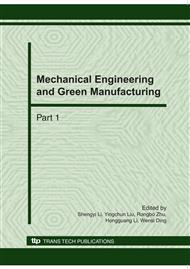p.265
p.271
p.276
p.282
p.287
p.292
p.296
p.301
p.306
Numerical Analysis of Structural Reinforced Concrete Elements under Severe Impulsive Loads
Abstract:
The behavior and response of structural reinforced concrete elements under severe short duration dynamic loads was investigated numerically. The analytical approach utilized the Timoshenko beam theory for the analysis of reinforced concrete flexural elements, such as beams and one-way slabs. The differential equations of the Timoshenko beam theory were solved numerically by applying the finite difference method (FDM). The proposed FDM not only can account for both the shear and flexural deformations, but also can incorporate the strain rate effects on the strength of steel and concrete into the analysis. The results of this proposed FDM were compared with those obtained by using finite element method (FEM), were also compared with experimental data obtained by other investigators. The procedure of FDM in this paper was both fast-running and accurate and most suitable for design office application.
Info:
Periodical:
Pages:
287-291
Citation:
Online since:
October 2010
Authors:
Price:
Сopyright:
© 2010 Trans Tech Publications Ltd. All Rights Reserved
Share:
Citation:


